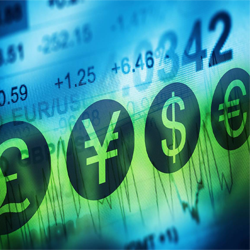
Risk is a fundamental aspect of forex. It comes about simply through exposure to the market. Exposure means the exposure or risk of an investor to a specific currency in the forex market.
In this article, we discuss what exposure means to traders and what some of its types are that one should know about so that one can effectively minimize it.
What is Exposure?
Currencies are subject to fluctuations in rates all the time and whenever the cash flow of a company, firm, or investor is calculated in a foreign currency, there is bound to be a constant risk to them. This forex exposure is experienced not just by those involved directly with the forex market and the trade of currencies but also by those entities that are indirectly exposed to its risks.
If a Japanese company, for instance, is competing against imports from China, and the Yuan per Yen falls, then the imports will have a lowered cost advantage over the Japanese company. This goes to show how even those entities that don’t have any direct link to the forex market are still exposed to it.
Types of Exposures
There are three basic exposures in the forex market. These are as follows:
Transaction Exposure
This is a type of exposure that is experienced when the trade involves transactions in multiple currencies. The risk that is inherent in the time lag between when a company or trader deals in trade and makes the final settlement is transactional exposure.
For instance, if a Japanese exporter is to receive $100,000 three months from now but the dollar depreciates relative to the yen, then the exporter is going to receive less than the amount mentioned, thereby suffering cash loss.

Operating Exposure
This type of exposure is the extent to which the future cash flow of a firm is influenced by the change in forex rates. Similar to transaction exposure’s consequence on the firm, it too leads to potential and actual loss and gain. However, whereas transactional exposure deals with specific transactions, this form of exposure is at a macro level and affects the whole economy and industry.
Translation Exposure
This is the risk of loss that stocks and assets are subject to when they are denominated in a foreign currency and need to be translated back to home currency. The change in forex rates during translation can alter the value of the instruments. This leads to a couple of issues faced by accountants.
One, whether to convert the items at the exchange rate as it is now or at the rate, which was present during the time of the transaction. If there is any profit or loss due to changes in the rate, the other issue then becomes whether to take them into the account in the present statements or postpone them. Transaction exposure does not affect the firm’s value since it only affects the balance sheet values and recorded profits.
Of these three exposures, the first two are classified as economic exposure and the last one is categorized as accounting exposure.
Conclusion
Being aware of the exposure that one has to the forex market is important since there are both direct and indirect implications that rate fluctuations can have on the value of your profits/losses and the balance sheets. These economic and accounting exposures need to be taken into account when considering trade and investments. Exposure can be minimized and the change in the value of financial instruments can be mitigated to some extent through hedging and other tactics.








Leave a Reply